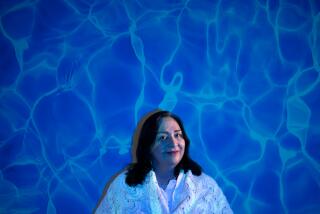Baked, boiled or fried?
- Share via
SOME LIKE IT HOT, as the old nursery rhyme and 1959 film put it. Some like it cold. Count the mahi-mahi in the first group and the sea urchins in the other.
Californians had their days of wilting in the heat and then reviving as cooler weather brought welcome comfort. But in the most literal heat wave of all -- the one occurring in the ocean -- it turns out that fish have dog days too.
The dearth of northern breezes not only made the air uncomfortably warm, it also kept deep, chilled waters from reaching Southern California’s coast. It wasn’t anything like Woodland Hills’ recent 119 degrees. But ocean temperatures reached into the high 70s, and to a sea urchin, that’s toasty.
Hundreds of the spiky purple pincushions, commonly seen among tide pools, washed up dead or dying in Newport Beach, and marine scientists were theorizing that the uncommonly warm water did them in.
In “My Fair Lady,” Henry Higgins is asked whether it’s occurred to him that Eliza Doolittle might have feelings. “Oh, I don’t think so,” he replies.
Similarly, as we escape the heat by heading to the beach, who would imagine that the marine life sharing the water with us also care about how warm the waves are? Mahi-mahi, as it turns out, love warm water as much as surfers do, arriving from their usual tropical hangouts to Southern California, along with yellowtail. They’re just tourists, taking advantage of the weather while many of the locals suffer.
Rockfish and albacore, in contrast, head out to sea, seeking out the colder waters. Sea anemones, exposed at low tide to the blistering sun, cannot run to the swimming pool. Instead, they fold in and cover themselves with bits of shell and rock, their version of sunscreen.
No need to feel sorry for them. Anemones, which don’t age, can, theoretically at least, live indefinitely. Which means that in their own way, they can more than take the heat.


